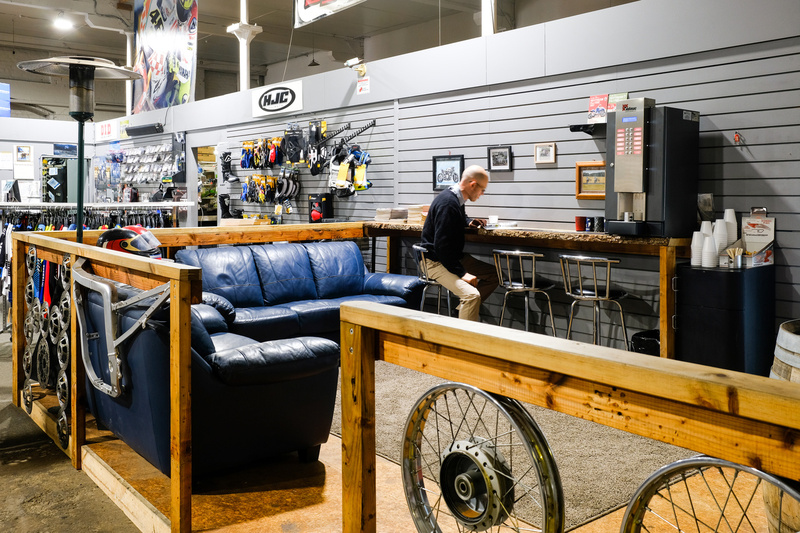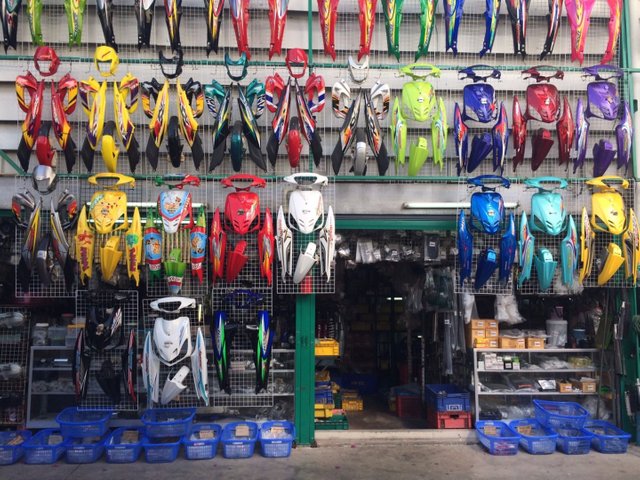Visit Our Motorcycle Shop for Expert Recommendations and High Quality Products
Visit Our Motorcycle Shop for Expert Recommendations and High Quality Products
Blog Article
Recognizing the Necessary Parts of a Bike: A Comprehensive Overview for Fanatics
For motorbike enthusiasts looking to boost their riding experience and ensure their bikes run efficiently, recognizing the necessary components of a bike is paramount. Each element, from the engine's detailed functions to the vital role of the stopping systems, not only affects performance but likewise safety and security and convenience.
Engine Elements

The camshaft plays a crucial duty in regulating the timing of the engine's valves, making certain the precise opening and closing required for reliable fuel and air consumption, along with exhaust expulsion. This timing is critical to keeping optimal engine performance and performance. Furthermore, the carburetor or fuel injection system, depending upon the bike design, is accountable for mixing air with fuel in the proper proportion for burning.
The cooling system, either air or liquid-based, functions to maintain the engine's temperature level within operational limits, avoiding getting too hot and making certain longevity - moto parts nz. Each component, carefully designed and integrated, adds to the seamless operation of the engine, specifying the bike's power outcome and total efficiency
Transmission System
Integral to the motorcycle's performance, the transmission system guarantees efficient power transfer from the engine to the wheels. This system consists of numerous critical parts, consisting of the clutch, gearbox, and final drive, each playing an essential function in translating the engine's power right into motion. The clutch, usually run by a hand bar, offers to engage and disengage the engine from the transmission, enabling for smooth equipment changes and controlled acceleration.
The transmission, frequently described as the transmission appropriate, includes a collection of gears that bikers can by hand shift via to change the bike's rate and torque outcome. These equipments are arranged in a series that allows the motorbike to accelerate efficiently and maintain optimum engine performance across different speeds. Many motorcycles utilize a consecutive transmission, calling for the motorcyclist to change equipments in a predetermined order.
Braking Devices
While comprehending the transmission system is key to taking advantage of a bike's power, equally vital is the ability to control and stop that power efficiently, which is where braking devices enter into play. Brakes are essential for safety and performance, offering the rider with the necessary control to browse various terrains and problems. Commonly, motorbikes feature two sorts of stopping systems: disc brakes and drum brakes.
Disc brakes are a lot more prevalent in modern-day bikes as a result of their exceptional efficiency. They contain a brake disc, caliper, and pads. When triggered, the caliper squeezes the brake pads versus the spinning disc, transforming kinetic energy into warm, consequently reducing the wheel. This system offers much better heat dissipation, regular efficiency, and boosted quiting power, particularly in damp problems.
Conversely, drum brakes, though less typical, are still discovered in some motorbikes. They work by pressing brake shoes against the inner surface area of a drum connected to the wheel. While usually less reliable in warmth dissipation and quiting power, drum brakes are simpler and much more cost-efficient.
Understanding these braking systems' subtleties enables bikers to keep their motorbikes properly and value the design that ensures risk-free and efficient stopping.
Suspension and Steering
Suspension and guiding systems are essential elements that significantly influence a motorbike's handling try these out and ride convenience. The shock absorber, including forks at the front and shock absorbers at the back, takes in road irregularities, boosting security and control. Front forks, commonly telescopic or inverted, compress and rebound to mitigate impacts, while rear shock absorbers maintain tire call with the roadway, critical for grip and safety and security.
Steering, centered around the handlebars, connects the biker to the motorbike's directional control. The guiding head bearings guarantee smooth procedure, enabling accurate maneuverability. Appropriate alignment and upkeep of these bearings are important for predictable steering feedback and reducing motorcyclist exhaustion.
The suspension's adjustability is another vital aspect; preload, damping, and rebound settings permit personalization to fit numerous riding problems and designs. This versatility is crucial for optimizing efficiency, whether browsing urban streets or dealing with rugged routes. moved here Developments like digital shock absorber supply real-time adjustments, enhancing trip quality across diverse terrains.

Electrical Equipments
After guaranteeing a controlled and smooth trip with reliable suspension and guiding systems, interest transforms to the electrical systems, a pivotal facet of modern motorcycles. These systems play a critical function not only in starting the engine however additionally in powering different parts that enhance the capability and safety of the motorbike.
At the heart of a motorbike's electrical system is the battery, which stores electric power required for starting the engine and powering auxiliary systems - motorbike shop. The alternator or generator, combined with the rectifier-regulator, guarantees the battery continues to be billed while the motorcycle functions, transforming power into electrical energy and preserving voltage degrees
The ignition system, an additional essential component, is liable for stiring up the air-fuel combination in the engine's cylinders. Modern bikes often utilize a digital ignition system, providing higher efficiency and reliability contrasted to typical systems.
Lights systems, consisting of fronts lights, tail lights, and indications, are additionally essential, ensuring visibility and safety for the motorcyclist. Added digital elements such as sensors, control devices, and presents contribute to sophisticated attributes like gas shot management, anti-lock braking systems (ABDOMINAL), and digital control panels, better enhancing the riding experience.
Conclusion
A thorough comprehension of a motorcycle's crucial components, consisting of the engine, transmission system, braking mechanisms, suspension, steering, and electrical systems, is essential for enthusiasts intending to optimize Discover More comfort, performance, and safety and security. Proficiency of these components enables educated choices regarding maintenance and upgrades, eventually boosting the riding experience. By incorporating this knowledge, riders can ensure their motorbikes operate at peak efficiency and dependability, therefore making the most of both enjoyment and long life of their vehicles.
For motorbike fanatics looking to elevate their riding experience and guarantee their bikes run smoothly, comprehending the essential components of a motorcycle is critical.Important to the motorcycle's functionality, the transmission system guarantees effective power transfer from the engine to the wheels.While comprehending the transmission system is vital to taking advantage of a motorcycle's power, similarly important is the capability to control and stop that power efficiently, which is where stopping systems come right into play. Commonly, motorcycles feature 2 types of braking systems: disc brakes and drum brakes.
An extensive understanding of a motorbike's important parts, consisting of the engine, transmission system, braking mechanisms, suspension, steering, and electric systems, is vital for fanatics intending to enhance performance, safety, and comfort.
Report this page